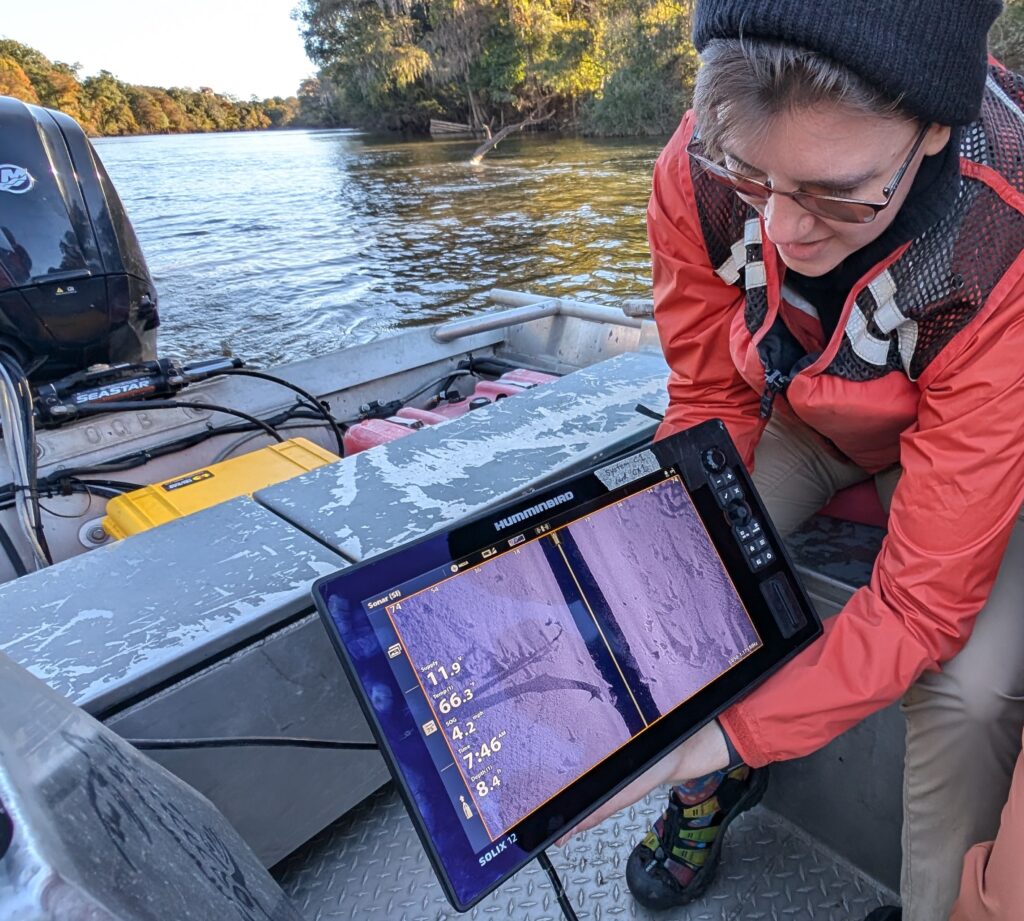Last month we had the privilege of hosting Dr. Adam Kaeser and Jake Roush of the Panama City US Fish and Wildlife Conservation Office. Adam is currently the Gulf Sturgeon Recovery Lead for the Service but has roots here in the lower Flint River basin (LFRB) after starting his research career as a Fisheries Biologist with GADNR. Jake is a Biological Science Technician for the Service while also pursuing a master’s degree examining endangered and threatened freshwater mussel species using eDNA techniques.
During their visit, our team got to learn new methods for studying benthic habitats in streams using side-scan sonar (SSS) techniques. Adam pioneered these methods in habitats of the LFRB in the early 2000’s and has since continued to work on how best to collect, process, and apply these data, train others in these processes, and adapt to new technological advances! We teamed up with the Mussel Conservation Lab to learn SSS theory, best practices, and how to complete surveys on the water. This involved taking out two research boats and simultaneously scanning the bottom of the river on both banks of one of our long-term water quality and mussel monitoring sites on the Flint River. We then got to take these scans straight back to the lab to learn how to process them via Python and ArcGIS tools. We hope to be able to use these techniques in the future to better understand benthic habitats of our streams for research applications including fish and invertebrate habitat, estimating habitat change over time, and quantifying streambed morphology for ecosystem modeling applications.
We greatly appreciate Adam and Jake’s time and generosity in sharing some of their work with us and look forward to future collaboration with their team!






